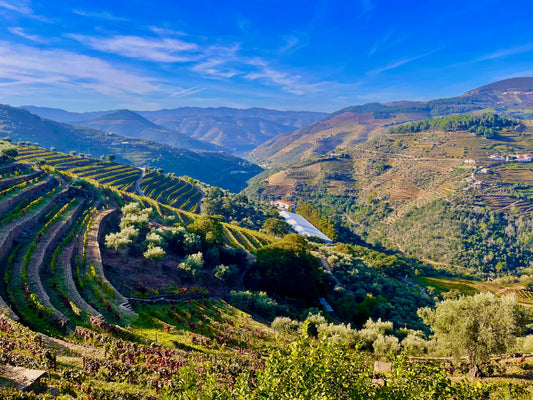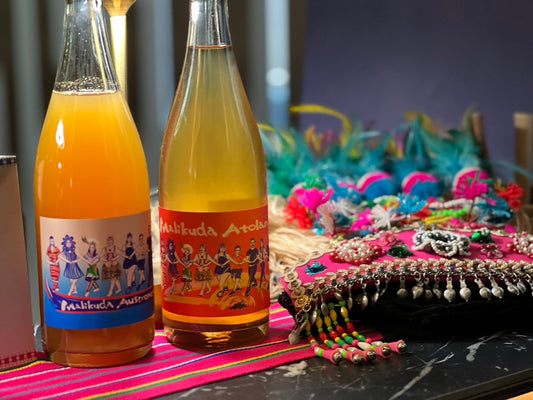| Old vines are a testament to our ancient bond with the vine and they might be holding the key to the future of winemaking. Lisse Garnett reports from this year's Old Vine Conference in Campania. |
| Old vines, living links to our planet’s past, may hold the key to the future of winemaking. An old vine retains a biological instinct to self-regulate and respond to a changing environment. Yet for various reasons, chief among them the fact that the older the vine, the lower its productivity, this priceless natural asset is an ever-diminishing resource. The Old Vine Conference was set up to galvanize and connect custodians of old vines through education and research. This year, participants met to discuss and share strategies, surrounded by ancient vines. Old vines deserve recognition and their own premium category on the world’s wine stage, said conference co-founder Sarah Abbott. This year’s gathering took place in Campania, one of Italy’s poorest regions, yet fabulously rich in ancient culture and archaeological sites. Pompeii, Naples and Herculaneum, the Amalfi Coast, Vesuvius, Capri and Ischia all lie within its boundaries. Campania has a huge wealth of old vines – thanks in part to producers like Feudi di San Gregorio, which manages 50 plots dating back at least a hundred years. Antonio Capaldo, Feudi’s chairman and our host, believes these genetic treasure troves are key to grape diversity. He shared the platform with master pruner Pierpaolo Sirch, eminent agronomist Professor Attillo Scienza and Viviana Malafarina, winemaker at Basilisco, the winery bought by Feudi in 2011. |
| Basilisco lies in Barile, a beautiful but impoverished hill town. The winery is housed in a 16th-century palazzo converted in 2011. Barile lies on Mount Vulture, an extinct volcano over 400m above sea level. Underground cellars dug by Albanians fleeing the Ottomans in the 15th century are now used for storing wine. Basilisco has 24ha of organically-farmed Aglianico and a hectare of Fiano. Lo Storico is an 80-year-old ungrafted vineyard 580m above sea level. Sea breezes keep disease at bay, it’s very cool and the vines ripen late. Yields are small but healthy. The vines are trained to small stakes and tied with gorse branches in the local traditional method; they are surrounded by wild asparagus, olives, mint, iris, rocket and all manner of indigenous herbs. The soil is fertile and mineral-rich and Aglianico (known as the ‘Barolo of the south’) flourishes here. Like every historical vineyard Feudi takes on, Lo Storico is catalogued and mapped. Buds from this precious site are used to propagate other vineyards and complex data is amassed about each individual vines’ vegetative and productive cycle. |
| Professor Scienza and Pierpaolo Sirch explained that vines have the potential for extreme longevity when cared for correctly. Proper pruning is vital, and local techniques, which have evolved over time in response to local climatic factors, are being forgotten. Pruning today is often seen as unskilled, menial work, with the result that it’s not done correctly and trunk disease and virus are rife. Scienza estimates some 10 percent of the world’s vines are affected. |
| Esca, a wood-rotting fungus, is one such disease. Pruners advocate operating rather than plant removal and the results are good – so good that Sirch travels the world operating on afflicted vines. Sap flow is paramount, he explained: if it’s cut off the vine will be compromised. Only first- or second- year growth is pruned: room to expand with energy rather than vigour is key. As vines age, sap flow increases: healthy plant structure is a physiological gain of time served. Older vines are less susceptible to disease, their deeply-established roots protect against drought, flooding, heat and frost, in which conditions they are the most productive, more so than younger plants. Older plants have a biological instinct to self-regulate in response to environmental factors. Understanding vine epigenetics – how environment and other factors can cause changes that affect the way genes work – could be key to fighting climate change. Old vines the world over represent a genetic database. The conference discussed how to express this asset to drinkers, and the idea of a universally understood symbol like an ark motif was mooted. We would all benefit from clear labelling: standardization of what constitutes an old vine would also be useful. Old vines are the missing link to a cooler past. While there is much to debate in terms of the taste and textural expression of old vines, there is no doubt that a collective understanding of this resilient vine category can but add to our armoury of tactics for dealing with climate change. The Old Testament tells us Noah cultivated vines on Mount Ararat in Anatolia, the resting place of the Ark close to the source of the Tigris and Euphrates. This is indeed the spot where DNA suggests man first domesticated wild vines. Here too on these floodplains the Sumerians created one of the first great civilizations. They viewed wine as a gift from God, imbued with powerful properties of a certain place. Man’s relationship with wine is as significant to our history as language. It is possible early man tasted fermenting grapes before mastering reason. Wine has evolved with us. It is the art of man, the ultimate communion of human and nature. And understanding its past might just be key to our future. |
| Lisse Garnett was a BBC broadcast journalist before turning to drink. Years in pubs and hospitality financed her education, little did she know her true calling was right there all along. Plumpton, WSET and specialist wine importing followed. Today she writes. |



